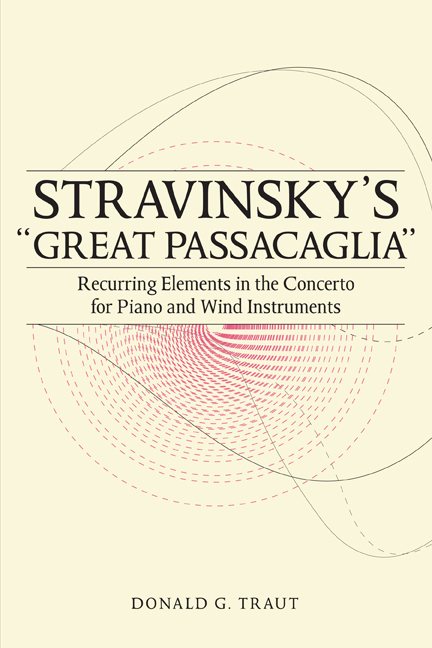Book contents
- Frontmatter
- Dedication
- Contents
- Acknowledgments
- Introduction
- 1 Context and Composition
- 2 Concerto as Catalyst
- 3 Analytical Tools and Recurring Elements
- 4 Counterpoint and Tonality in the First Movement
- 5 Tetrachords and Tritones in the Largo
- 6 Points of Imitation in the Finale
- Conclusion
- Appendix
- Notes
- Bibliography
- Index
6 - Points of Imitation in the Finale
Published online by Cambridge University Press: 12 August 2020
- Frontmatter
- Dedication
- Contents
- Acknowledgments
- Introduction
- 1 Context and Composition
- 2 Concerto as Catalyst
- 3 Analytical Tools and Recurring Elements
- 4 Counterpoint and Tonality in the First Movement
- 5 Tetrachords and Tritones in the Largo
- 6 Points of Imitation in the Finale
- Conclusion
- Appendix
- Notes
- Bibliography
- Index
Summary
To this point, we have seen how the four recurring elements function within the first and second movements of the Concerto. In each case, the REs play a key role in establishing the movement's overall character. In the opening Allegro, RE 1 is the primary motivic idea, while RE 4 provides a plan for harmonic structure on several levels. These two elements function together— along with Stravinsky's unique rhythmic schemes—to create the fast first-movement excitement of a Baroque concerto. The slow second movement features a more direct means of expression than the complexity of the opening movement. Here, RE 2 asserts itself. The A–G–F–E tetrachord and its variants provide both registral frameworks for content and overt themes throughout the movement. These tetrachords also combine to project clear tonal centers, which themselves suggest the stepwise ascent of RE 4. And while its presence is perhaps understated, RE 3 also helps to establish the personality of the opening two movements, providing contrasting material in each case, while at the same time unifying them through horizontal use of tritones.
Like the previous two, the third movement has its own character and role in the Concerto. Of course, it completes the fast–slow–fast layout expected from a “Baroque” concerto. However, compared to the previous two movements, the Finale comes across as whimsical and may seem disorganized. In some ways, the movement is quite simply a pastiche of short sections, each with its own identity. This tendency is probably the one most critics cite. One critic from the Boston premiere said “there is a succession of styles rather than a continuity of individualism.” And in the New York Times, Downes stated that these are “the sounds made by a man whose step is light and quick, but who hurries always to the next turning, hoping to find there that which always existed for him in the place whence he came.” Even Charles Joseph stated that the ideas in the third movement “parade by the listener without concern for thematic unity.” And not without reason: few sections of the movement last more than 25–30 seconds before moving on to something else. Keep in mind, Stravinsky was under tremendous pressure to finish it and meet the (self-imposed) deadline for the premiere. It seems at times that the goal is not development, but energy and freshness.
- Type
- Chapter
- Information
- Stravinsky s "Great Passacaglia"Recurring Elements in the Concerto for Piano and Wind Instruments, pp. 111 - 128Publisher: Boydell & BrewerPrint publication year: 2016



